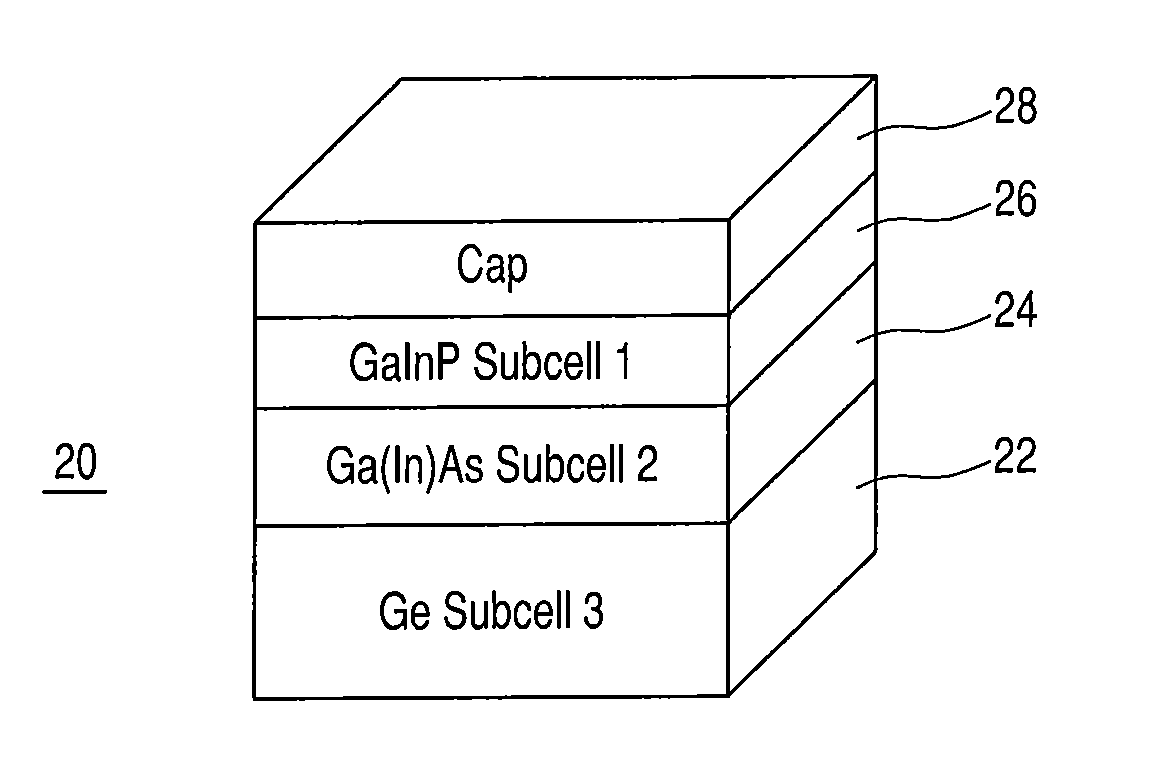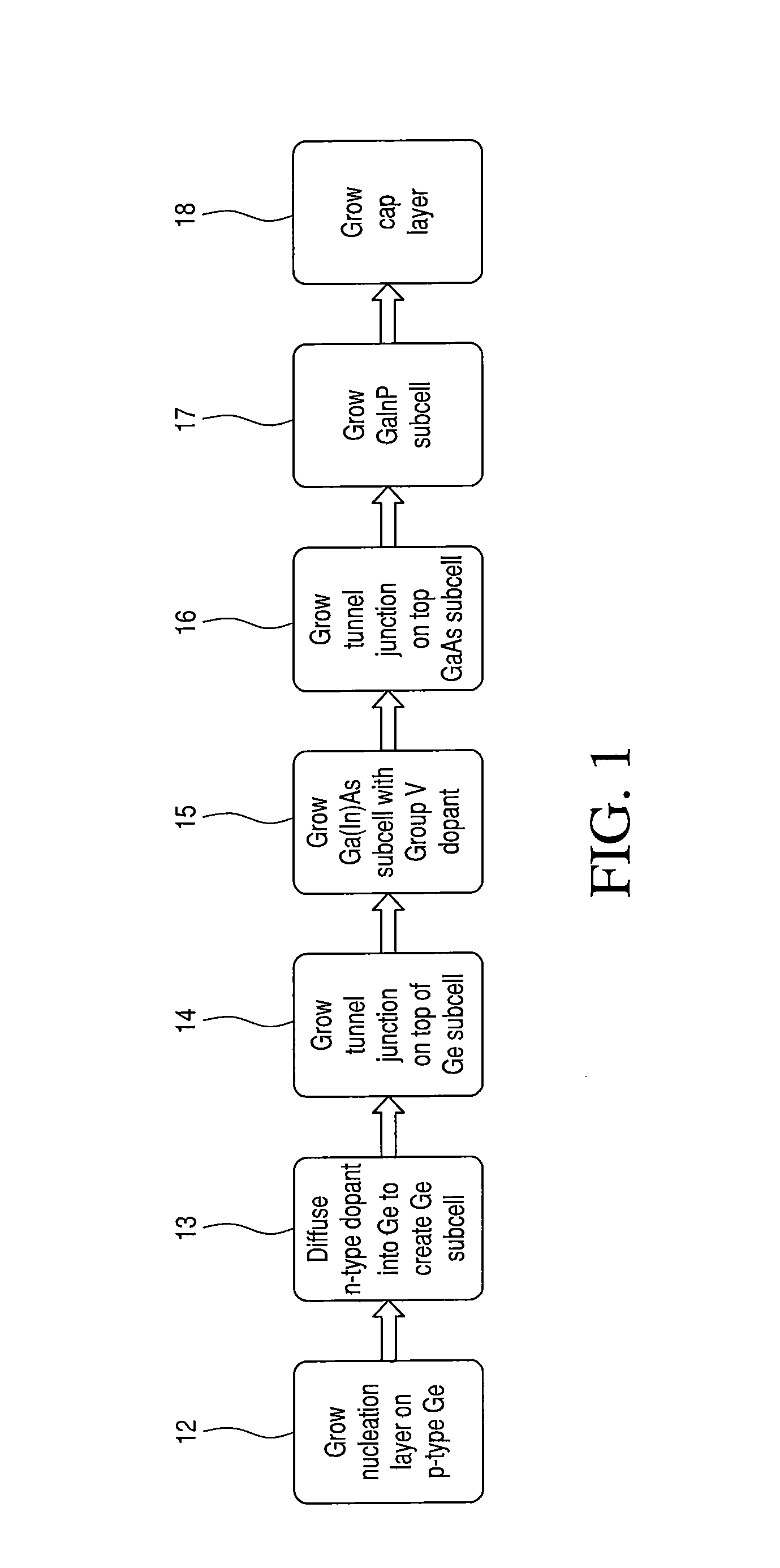GROUP V DOPING OF GaAs-BASED LAYERS TO IMPROVE RADIATION TOLERANCE OF SOLAR CELLS
a solar cell and radiation tolerance technology, applied in the field of energy generation devices, can solve the problems of reducing the lifetime of minority carriers, reducing the overall cell life, and limiting the performance and longevity of triple junction solar cells, so as to improve the “end-of-life” cell performance, improve the efficiency and useful life of metamorphic alloys, and improve the performance of solar cells
- Summary
- Abstract
- Description
- Claims
- Application Information
AI Technical Summary
Benefits of technology
Problems solved by technology
Method used
Image
Examples
Embodiment Construction
[0028]The present disclosure is directed to solutions to modify the source of minority carrier property degradation of GaAs-based cells and subcells; namely, the formation of As vacancies under energy particle bombardment during exposure of the cells and subcells to radiation. As noted above, existing systems address the problem by anticipating the loss of current from GaAs-based subcells after radiation occurs, and seek to balance the radiated subcell performance against performance at “beginning-of-life”. Other attempts recognize that radiation resistance can be optimized within the subcell by intentionally introducing ionized impurities, such as Zn, group-II or C, group-IV dopants to attain consistent minority carrier diffusion lengths (via induced electric fields). Additional device designs, such as optical reflectors, are used to “thin” the active area of the radiation damage-prone region, typically the base of a p-type material. Variations presented in this disclosure achieve ...
PUM
 Login to View More
Login to View More Abstract
Description
Claims
Application Information
 Login to View More
Login to View More - R&D
- Intellectual Property
- Life Sciences
- Materials
- Tech Scout
- Unparalleled Data Quality
- Higher Quality Content
- 60% Fewer Hallucinations
Browse by: Latest US Patents, China's latest patents, Technical Efficacy Thesaurus, Application Domain, Technology Topic, Popular Technical Reports.
© 2025 PatSnap. All rights reserved.Legal|Privacy policy|Modern Slavery Act Transparency Statement|Sitemap|About US| Contact US: help@patsnap.com



